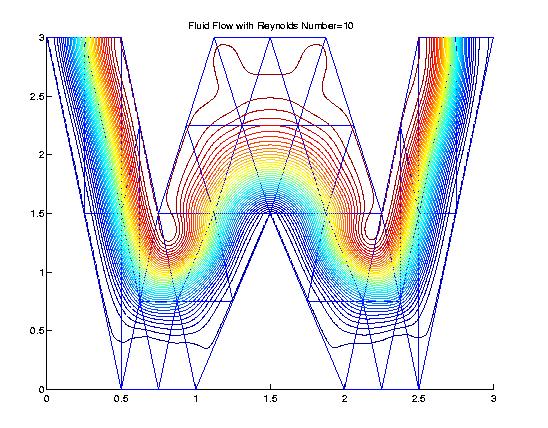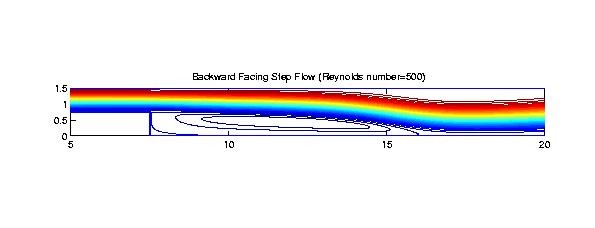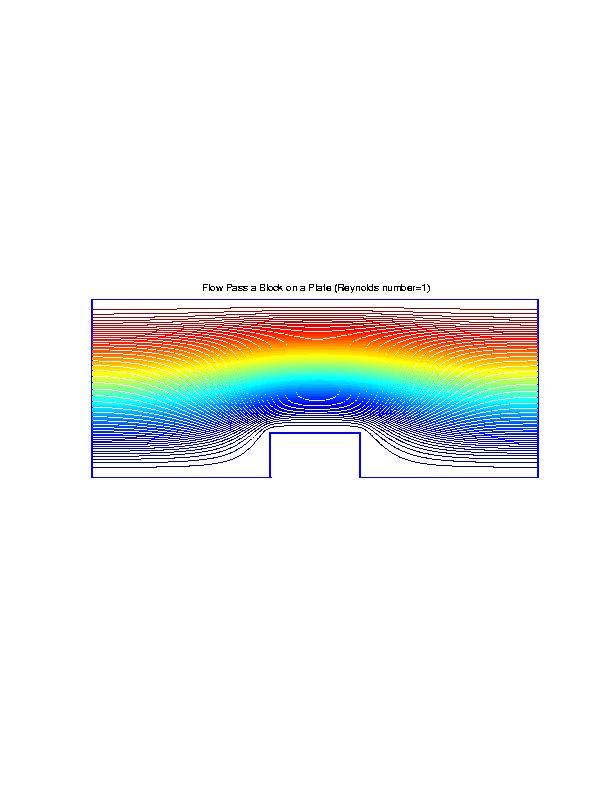Flow Similations by Ming-Jun Lai
We use bivariate splines to solve 2D steady-state Navier-Stokes equations.
The main features of our methods are (1) the stream function
formulation is used so that the divergent free condition is satsified exactly;
(2) splines of higher degree and more smoothness are used
so that the vorticity is a continuous function; (3) the solutions with
higher Reynolds numbers can be computed easily; See examples below.
(4) Navier-Stokes equations over arbitrary
polygonal domains can be solved; (5) our methods are very efficient and
effective. All the following numerical experiments were performed on a
Sun workstation with 172 Mhz and a PC laptop with 400 Mhz. We did not use
any supercomputers nor any parallel processes.
Cavity Driven Flow
The following are standard cavity driven flows with various
Reynolds numbers:
Reynolds number=2000 ,
Reynolds number=3000 ,
Reynolds number=4000 ,
Reynolds number=5000 ,
Reynolds number=6000 ,
Reynolds number=7000 ,
Reynolds number=8000 ,
Reynolds number=9000 ,
Reynolds number=10000 .
Reynolds number=11000 .
Reynolds number=12000 ,
Reynolds number=13000 ,
Reynolds number=14000 ,
Reynolds number=15000 ,
Reynolds number=16000 ,
Reynolds number=17000 ,
Reynolds number=18000 ,
Reynolds number=19000 ,
Reynolds number=20000 .
The vorticity of the cavity driven flows can be found here.
Reynolds number=1,
Reynolds number=100,
Reynolds number=1000.
Flows on W-shape Channel
The following is flow streamlines over a W-shape channel.
Flows on FEM-shape Channel
The following is flow streamlines over a FEM-shape channel.
Backward Facing Step Flows
The backward facing step flows with various Reynold
numbers are given below.
Flows Pass an Inclined Plate
The following is the water flow around an inclined plate.
Wind Flows Pass a House
The following is the wind flow around a house:
Flows Pass a Rectangular box
The following is the water flow pass a rectangular box
Flows Around Circular Obstacle
The following are flows around circular obstacle with various Reynold
numbers.
I also used bivariate splines to simulate the air flows around two cars.
See more fluid flow simulations in a paper by Lai and Wenston in 2004.
















